
When rumbling along dirt roads in the proverbial middle-of-nowhere in Southern Queensland, there are many things you expect to see: isolated homesteads, endless stretches of gum trees, perhaps a few kangaroos or wallabies hopping across an empty field.
You do not, however, expect to see this.
Before Sue and I set out on our 8-day grand adventure exploring Southern Queensland, neither of us had heard of Jimbour House. An hour before we arrived there, we’d still never heard of it. But that’s when detours, mythical springs, and a bit of serendipity came into play.
We had just left our campsite in the gorgeous Bunya Mountains and were luxuriating in sunshine and blue skies as we motored down the road when we saw a sign that read: Boiling Springs Lookout. Always up for a diversion we backed up and turned down the gravel road and wended our way through countryside dotted with Queensland Bottle Trees and grazing cattle.
We finally arrived at our destination which, it must be confessed, was nothing like advertised. There was nary a sign of springs, boiling or otherwise, and the lookout, while pleasant enough, was certainly nothing to write home about.
There was, however, The Longest Man Made Structure In The World.
Also known as the Dingo Barrier Fence.
Built to protect livestock from the ravages of wild dogs and dingoes, the Dingo Fence stretches over 2126 km, and, as of 1999, is protecting approximately 4.7 million sheep, 1.2 million cattle, and 15,000 goats.
Constructed using wooden posts, strainers, star pickets, wire, and different types of netting, the Dingo Fence is cleared on both sides to a width of 5 metres. It is maintained by eight teams of men who patrol their section of the fence every single week. Amazing.
Also at Boiling Springs Lookout were two local ladies out for a drive. We shared a good laugh over the not-so-accurate signage and then they insisted that if we really wanted something good to look out, we simply had to visit Jimbour House. They gave us directions down a gravel road and off we went.
Are we ever glad we did.
Jimbour Historic Water Tower was built in the 1870’s.
Jimbour Station was developed in 1841 when Englishman Henry Dennis took up the property for pioneer owner, Richard Scougall, a Scotsman who’d arrived in Australia in 1832. Dennis established 11,000 sheep and 700 head of cattle and made Jimbour the first fully stocked station on the Darling Downs.
In its early days, Jimbour stretched over 300,000 acres and was the base from which explorer Ludwig Leichhardt commenced his famous exploration trek across western Queensland and out to the Northern Territory.
That same year, Thomas Bell, an Irishman, purchased the property and registered it as Jimba, said to be the local Aboriginal word for good pastures. Eventually the spelling evolved into Jimbour.
Although the Bell family built up the station by adding two homesteads, their finances took a turn for the worse and while the homestead was kept, the station had to be sold off.
Jimbour fell into disrepair from 1912 until 1923 when it was purchased and renovated by Wilfred Adams Russell and his wife, Millicent. They transformed the place and today it is a thriving property of 11,000 acres devoted to crops, cattle grazing, and wine production. Jimbour House is still owned and maintained by the Russell family, and is a haven for the arts, hosting Opera at Jimbour for the Queensland Music Festival, a biennial state-wide celebration of music and culture.
The road to Jimbour House leads past the historic water tower (see above) and Jimbour Chapel (see below). Isn’t it cute?!
Jimbour Chapel
The chapel was built in 1868 and was known for its “hearty services.” That made me chuckle. It also served as the first Jimbour School (1873) and a cinema in the 1940’s and 50’s.
From there a broad lane lined with Jacarandas and the occasional bottle tree curves up toward the house, and it isn’t until you’re almost upon it that you catch a glimpse of what unexpected beauties are in store.
I must confess that at this point Sue and I gaped. Repeatedly. At each other, at the entrance, and back at each other. Both of us are avid travelers and have trekked all over Europe, but neither of us expected to see such an unmistakably European setting in the middle of the Aussie outback.
It was beautifully jarring, and felt as if we’d mistakenly stumbled into a noble house in Italy or France.
We were enchanted.
We couldn’t stop smiling as we crunched along wide gravel pathways, craning our necks to look at palm trees and admire the glistening slate roof with its many folds and curves.
We admired the rose gardens and the lavender bushes fragrant in the hot sun, the sweeping terrace that was cool and shady even on the blazing hot afternoon we were there.
Then we turned around and saw the swimming pool with sweeping views over the downs. Can you imagine the marvelous pool parties they have on hot summer nights?
Thoroughly roasting by now, we happily trailed our fingers in the cool waters of the fountain. How good such things feel on a sweltering afternoon.
A few moments later clouds rolled in, giving luscious relief as we left the front of the sandstone mansion and went to explore the kitchen garden.
And what a lovely garden it is.
Across a pristine green lawn, a row of grape vines hints at verdant growth to come.
Entered through a gate marked with stone pillars, the Jimbour House kitchen garden is a bit of a dream place.
Spread over 3000 square metres, it is maintained in tribute to early pioneers who, because of their isolation, were reliant on their own skills in growing fruits and vegetables to feed themselves and their families. Rooted in Queensland black soil and fenced with local timber, the gardens are farmed as organically as practical, with all produce used by the Cellar Door, house kitchen, station staff, or the resident poultry.
Gravel pathways twist and turn between rock-bordered beds filled with fruit trees and great drifts of fragrant herbs. Depending on the time of year visitors can spot sunflowers, moon and stars watermelons, Turkish Turban pumpkins, and a range of heritage plants.
When we were there, silverbeet, Brussels sprouts, and other veggies were thriving.
Wandering the garden was greatly inspiring, setting my imagination whirring with ideas I could incorporate when I got back home to our farm.
As we emerged from the kitchen garden, the sun emerged from the clouds, turning the lawn into a shimmering, glowing expanse.
Next time we’ll explore the back of Jimbour House.
What is the best surprise you’ve had while traveling? xo

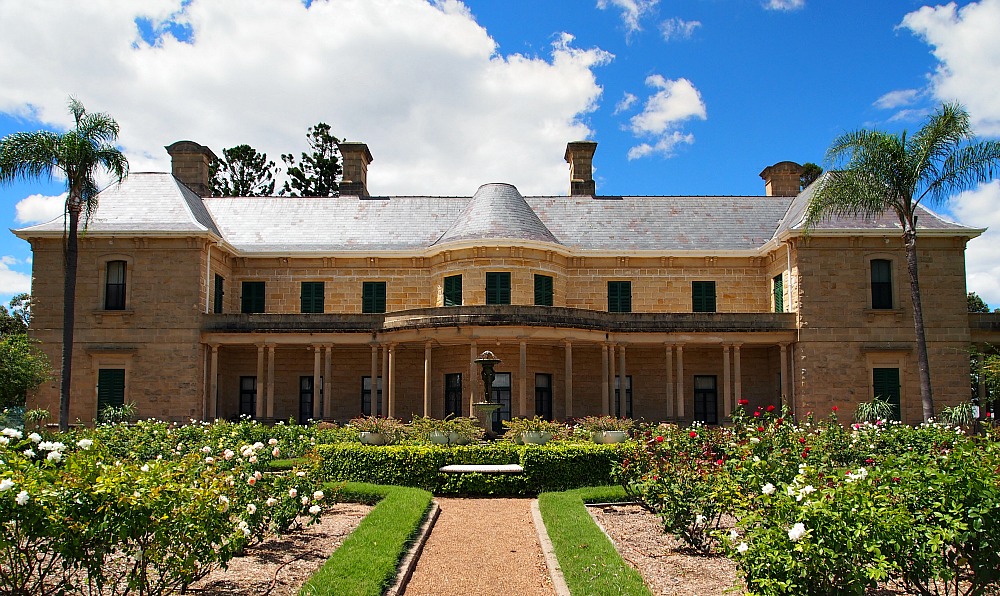
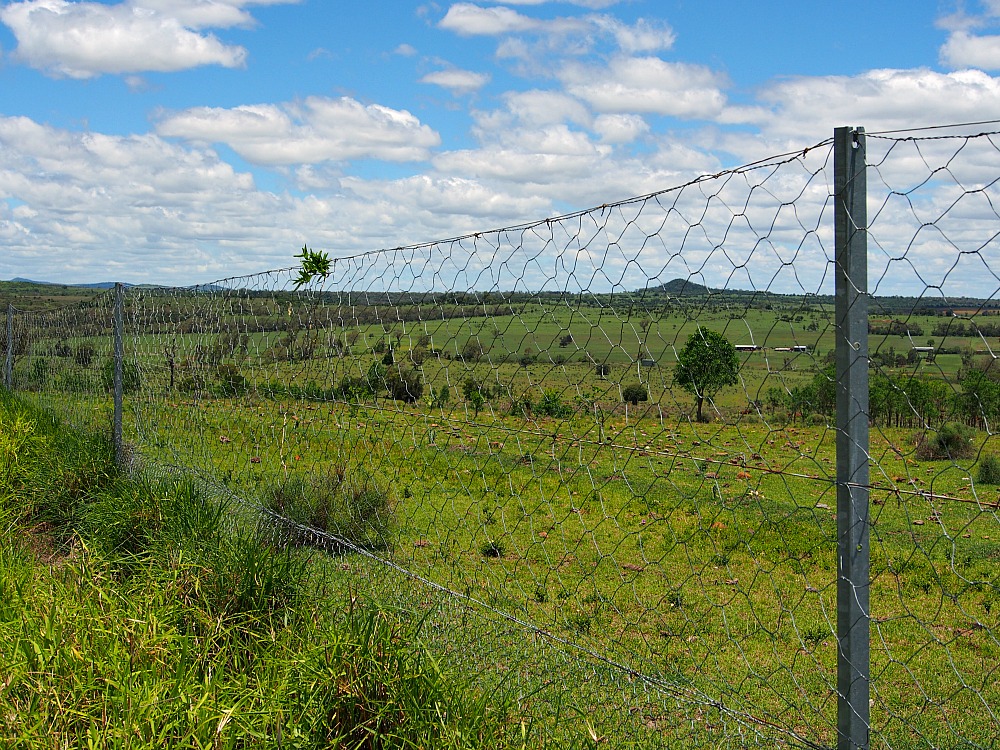
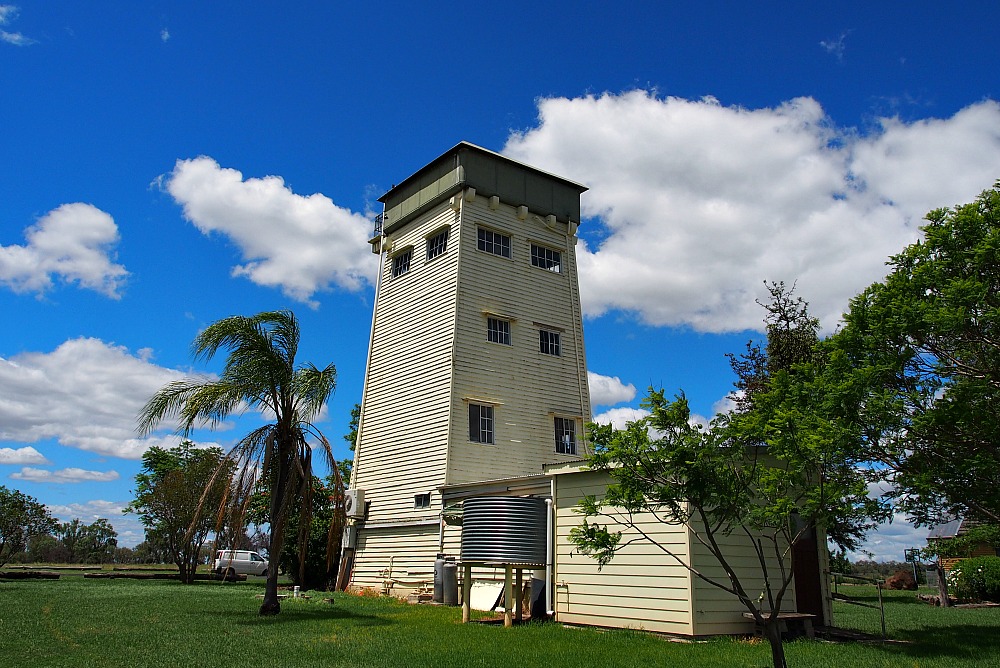
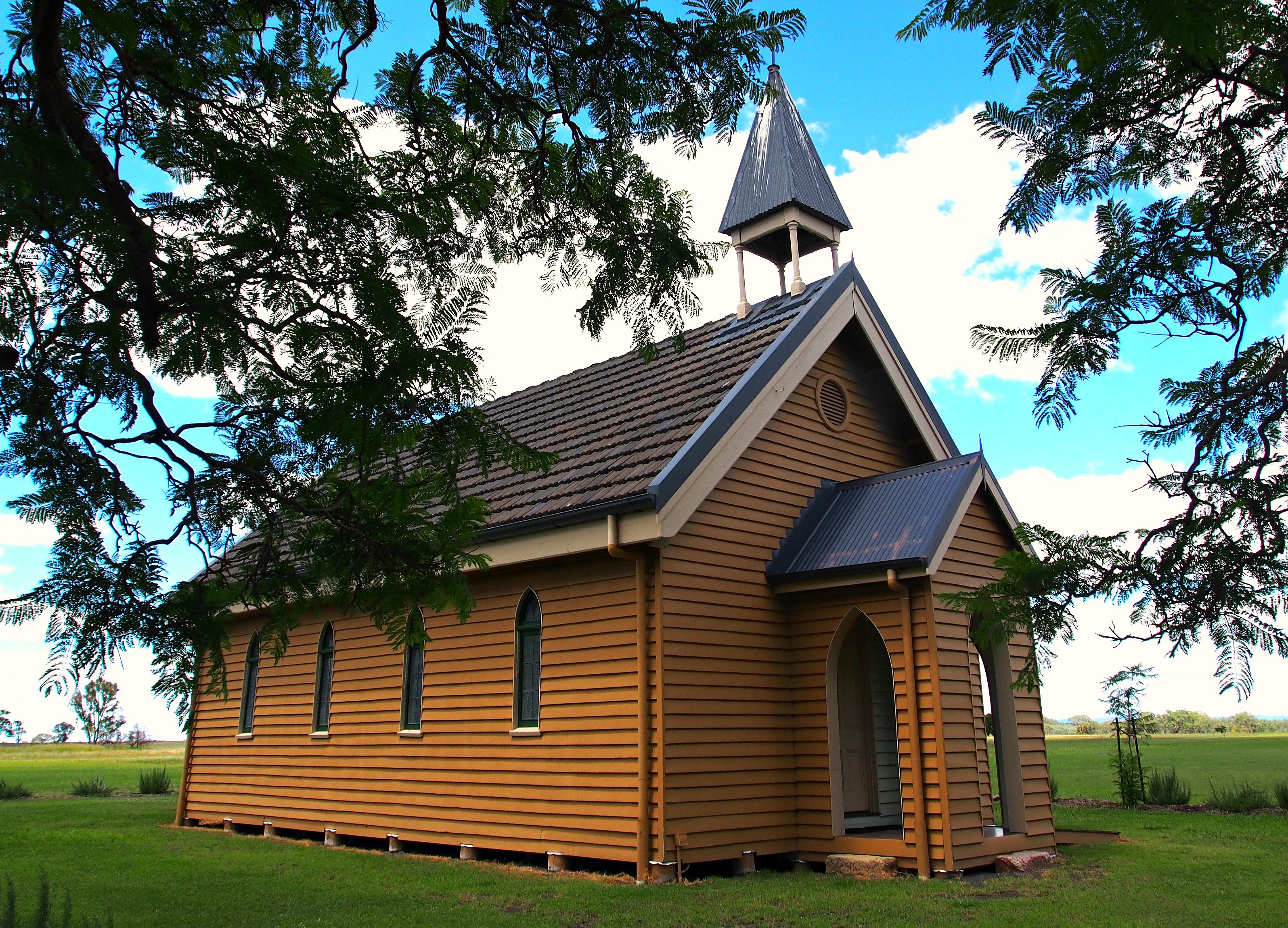
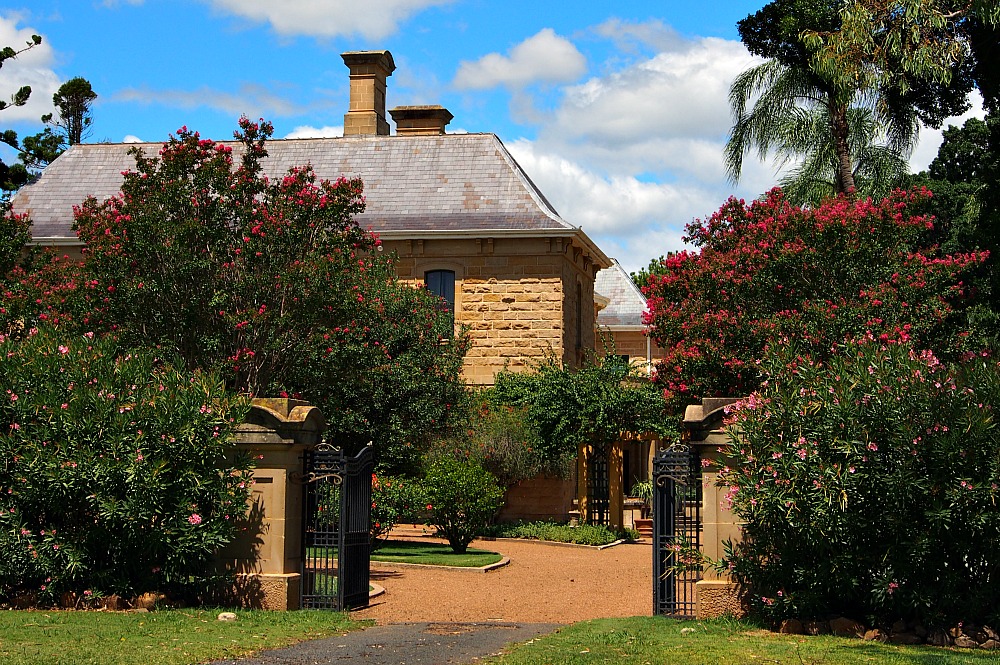
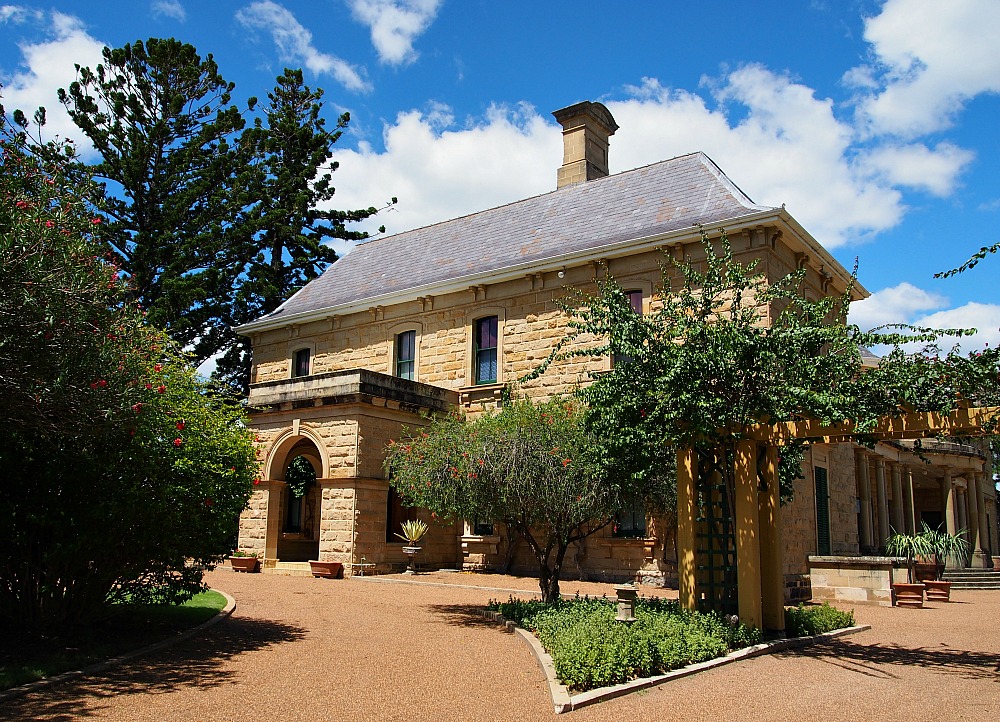
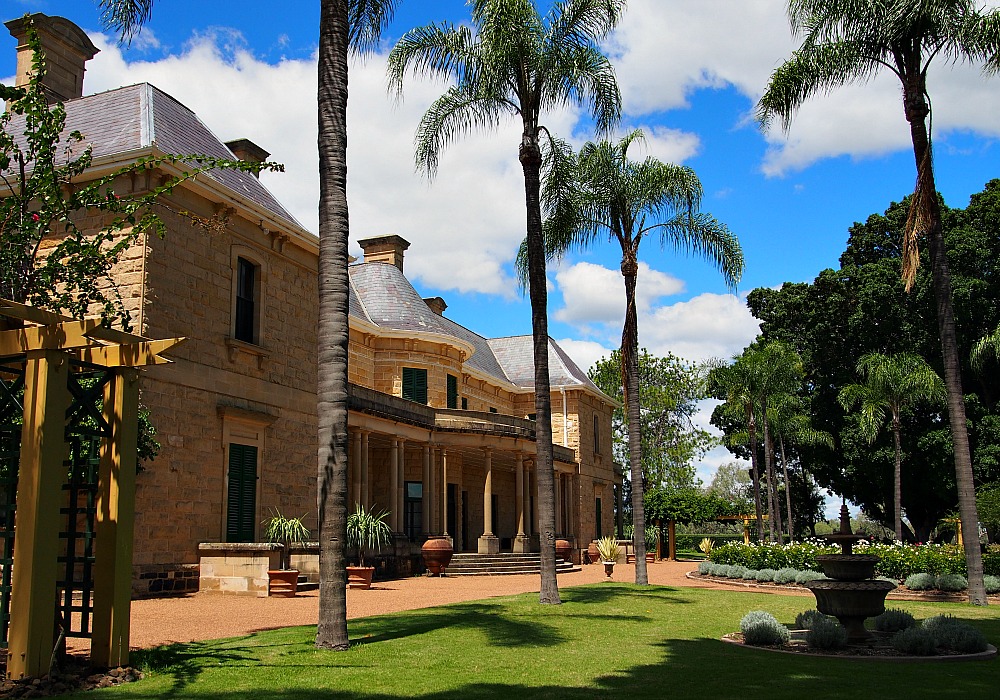
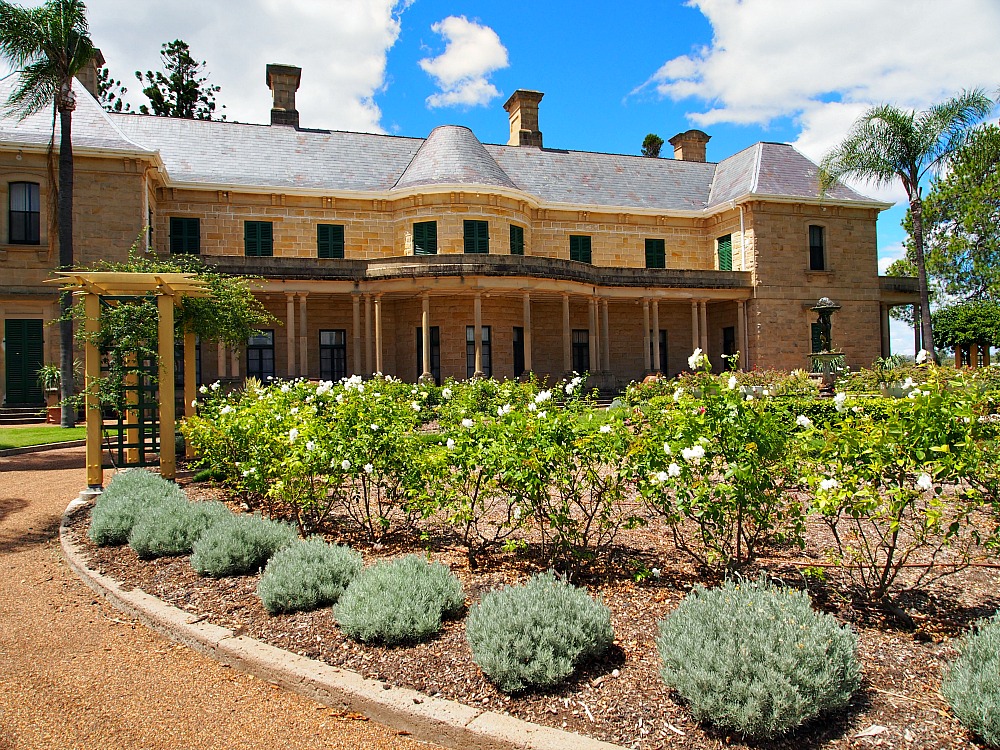
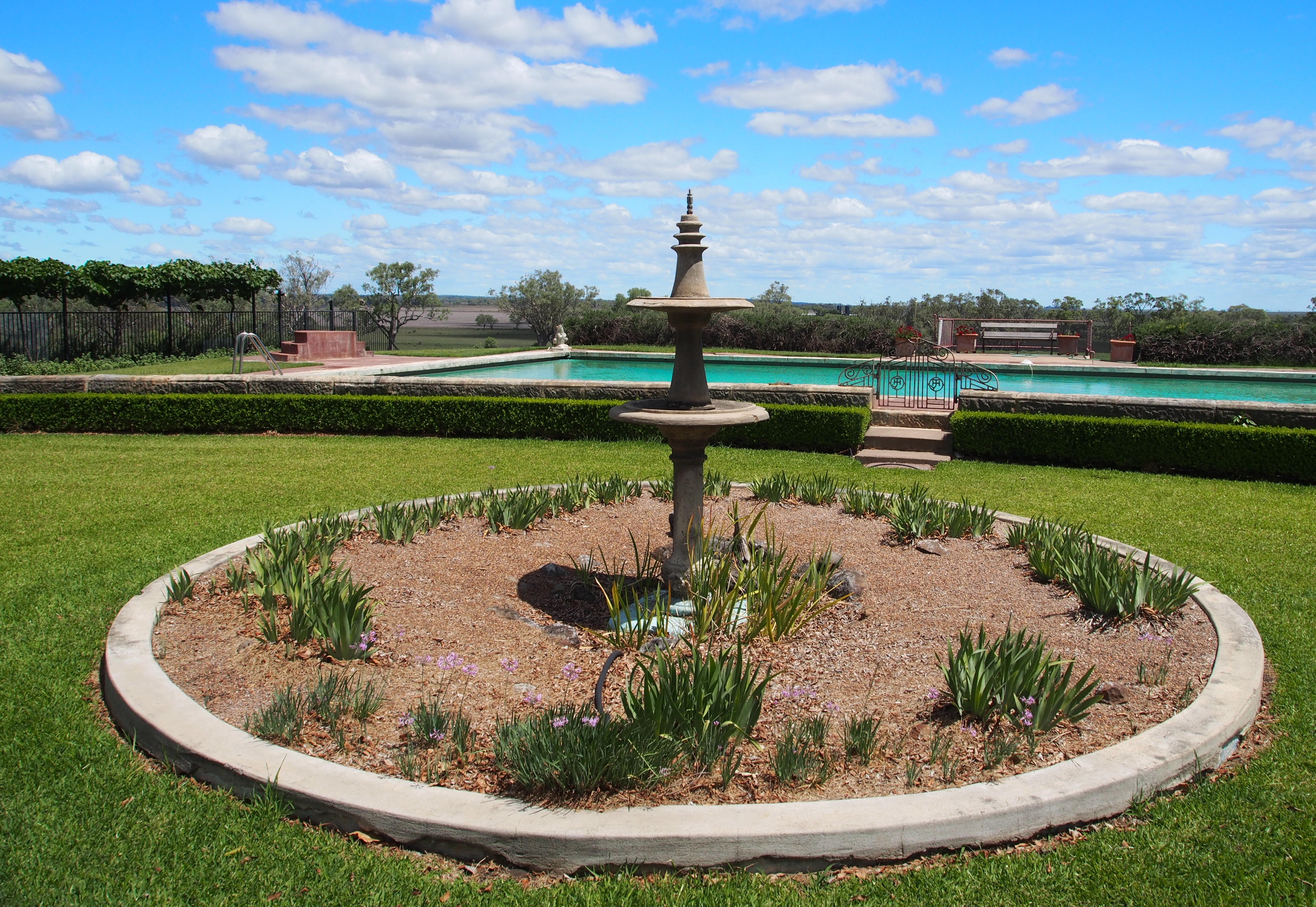
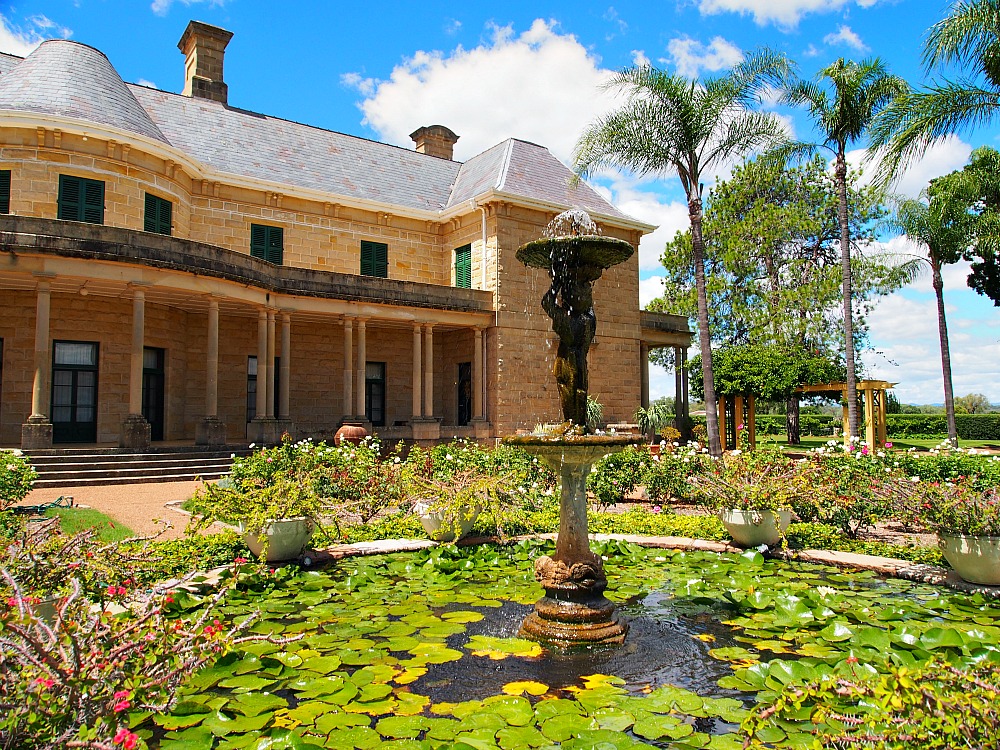
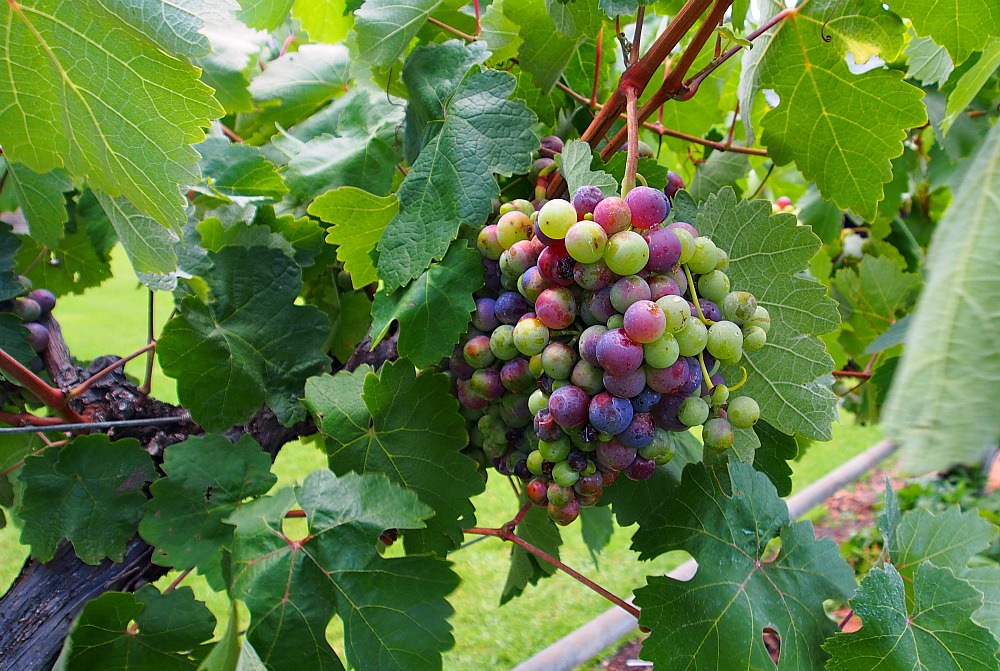
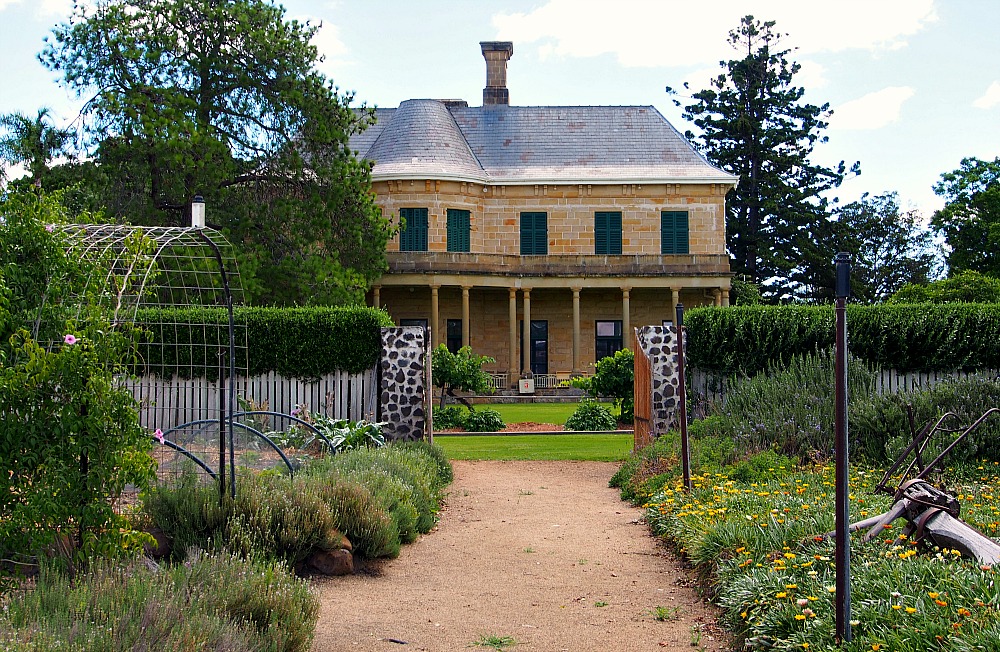
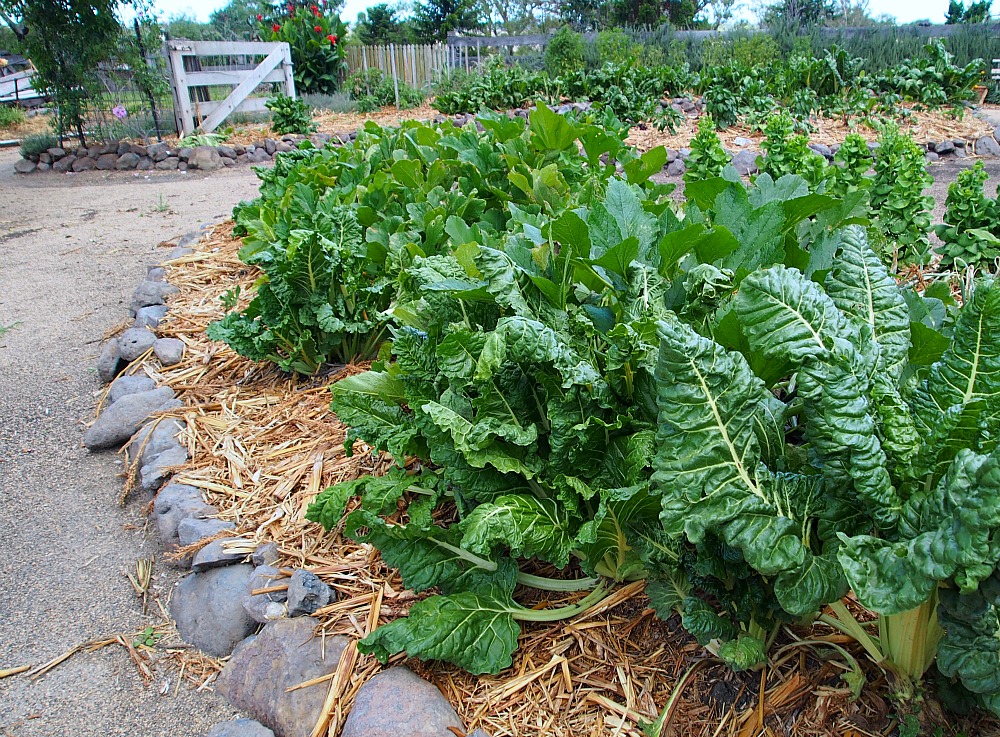
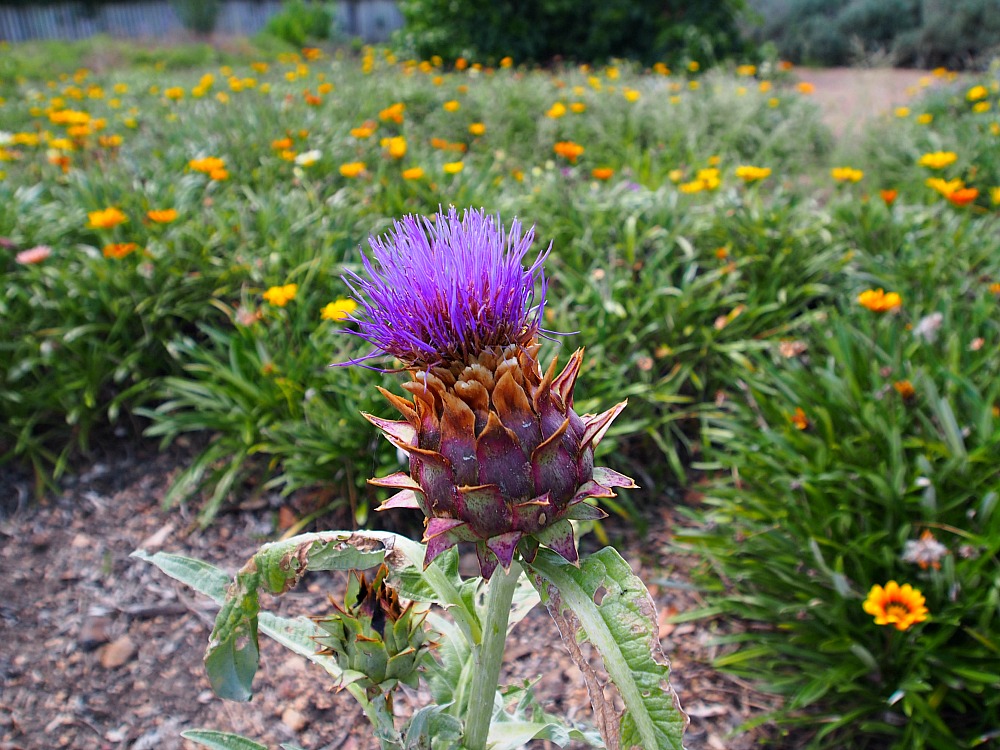
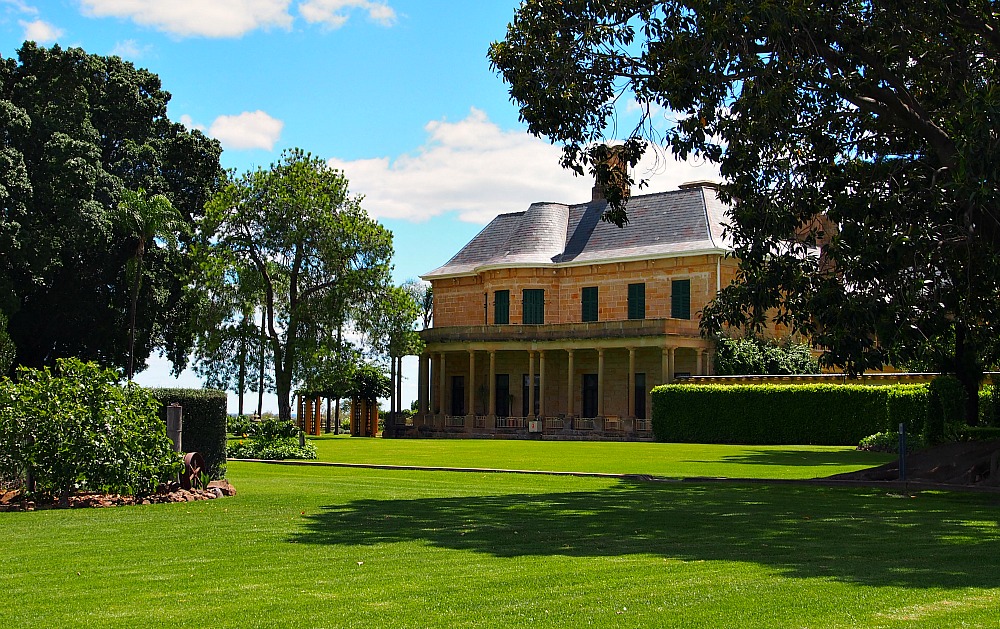
What a gorgeous surprise. It would take a fair bit of water and work to maintain but aren’t those vegies growing well. It is a credit to the staff and thank goodness Wilfred and Millicent came along to save it.
I think the fence is easier to maintain than those huge gardens. We’ve been surprised by all sorts of amazing things while traveling, too many to list ?
Didn’t even know that this existed. That is serendipity discovering this. Love the kitchen garden.
What an incredible property, how wonderful to just stumble across it. I think the dingo fence is pretty amazing too, even though a bit more ordinary. GG
What a beautiful sight it must have been to behold! Almost surreal really given its surroundings! 😀
That’s amazing, what a surprise to find a place like that! I have to say I haven’t really explored that part of Australia myself
Wow, what an unexpected and beautiful discovery. Loved the kitchen garden and seeing the lush green lawns. They must have a good water source.
That looks like an amazing place – somehow not what I associate with australia at all!
Very interesting, but I doubt the Dingo Fence is the Longest Man Made Structure In The World. What about the Great Wall of China or the Trans-Siberian Railway?
amazing! and gorgeous photos as always krista. i love surprises like this in the middle of a wander. hmmmm could that fence work for mr. d. trump, i wonder, and his presidential plans? a friend just came back from brisbane – he loved it there. looking forward to the next post!
What an amazing surprise! The dingo fence (as someone from the UK) sounds fascinating and the little chapel is beautiful! I adore log buildings 🙂
How gorgeous is that house?? I would love to have high tea in such a setting!
What a wonderful serendipitous surprise. That’s the beauty of travel. You never know what you’ll run into. By the way, what are dingoes? Great pictures. Thanks for sharing.
I would have squealed with delight to stumble upon that mansion too! What a nice treat to discover! And that stunning pool!
What a gorgeous surprise in the middle of the Aussie outback! Thanks for sharing 🙂
Ahhhh Australia… never ceases to offer surprises and in the most unexpected way too. The best surprise I’ve had while traveling was on my recent trip across the country, we had just crossed the 90 mile straight to arrive at this tiny truck stop that no kidding, served the BEST coffee I have ever had, this Irish girl was working the machine, and dang she had skill.
That place looks like heaven to me! We’ve just moved to a 23acre property. I would love our place to look like that… but ofcourse I have to settle for our home – which is perfectly adequate… but a girl can dream, can’t she?
That mansion is gorgeous and the gardens are very beautiful ♥
summerdaisy.net
Excellent post, Krista; I’ve found this really fascinating. I’m so glad that after the house fell into disrepair that it was bought by a couple who lovingly restored it – it’s such an important part of Australia’s pioneering history. I can’t get over how beautiful the swimming pool is – just incredible. I know pool fences do save lives, but swimming pools always look a lot better without a fence! xx
Goregous pictures and history to boot. That little house didn’t even look that old.
Such a beautiful historical walk. I love the gardens, it’s very calming 🙂
What a wonderful discovery. It does remind you of a European home.
Such a fantastic and beautiful homestead. Your descriptions place the person reading it in the very place you are standing. Wasn’t this beautiful home used in a television show? Will try and visit. I takes my breath away that some people were able to build this type of home here is Australia and it is still there. Just lovely.
This is a beautiful house …was this the same house used in the mini series return to eden..
I love Jimbour House, fondly remember many a school excursion to it (I grew up in Dalby.)
If anyone remembers the mini series Return to Eden, the house Eden is actually Jimbour House. .
What an absolutely amazing find. Reminds me a little of Iandra Castle in Central West NSW. Nothing like what you would expect to find in the middle of no where.